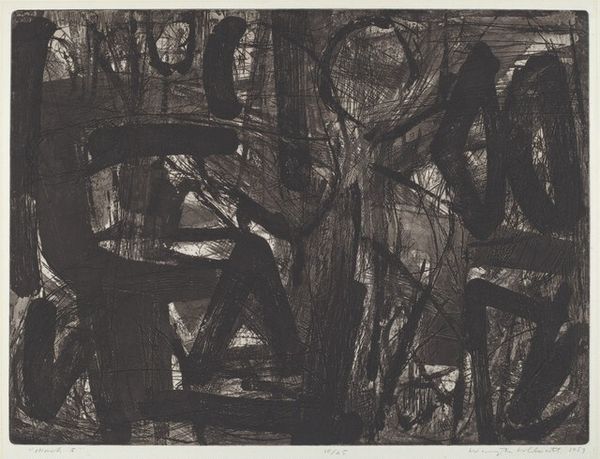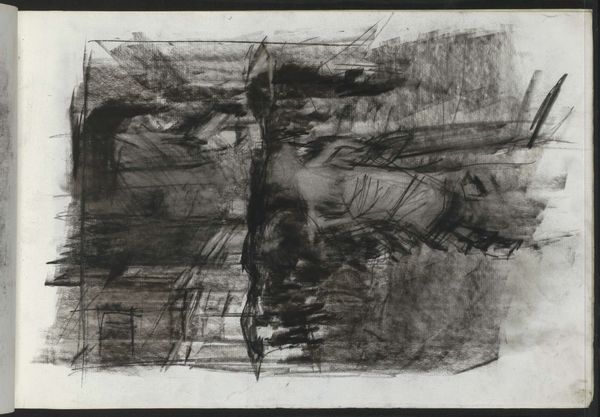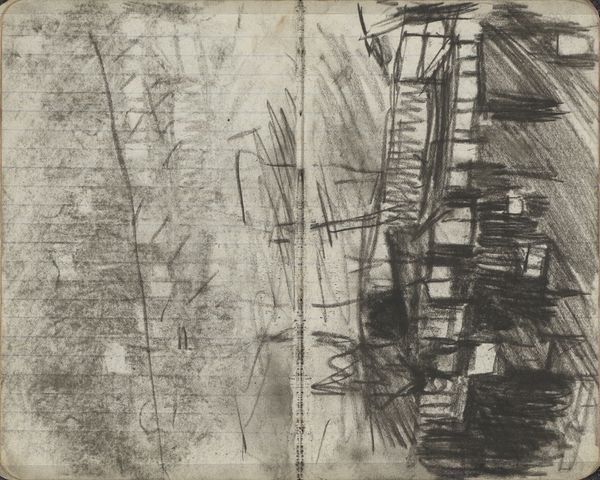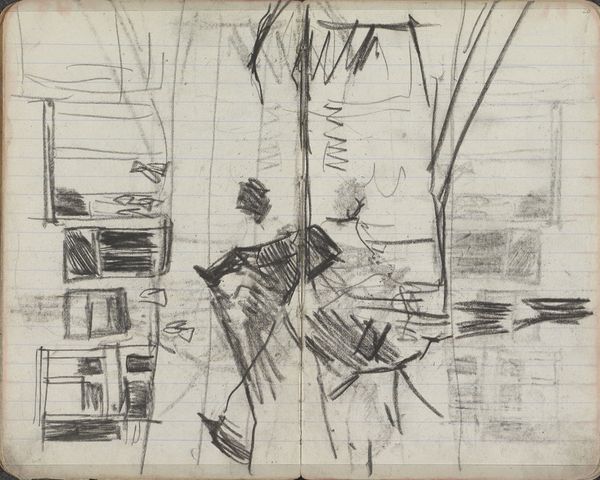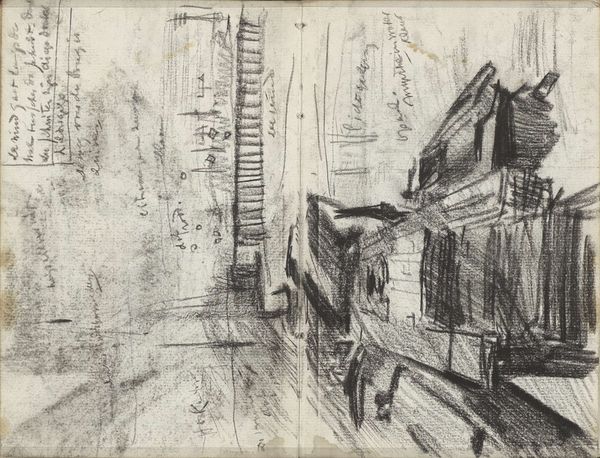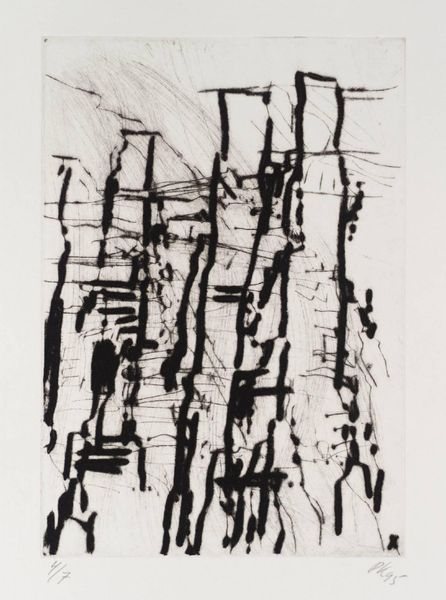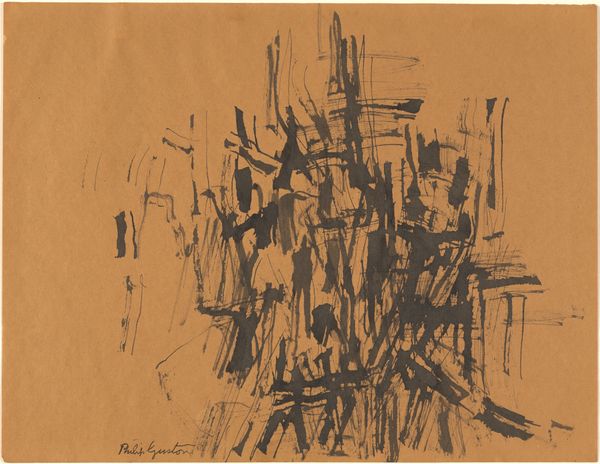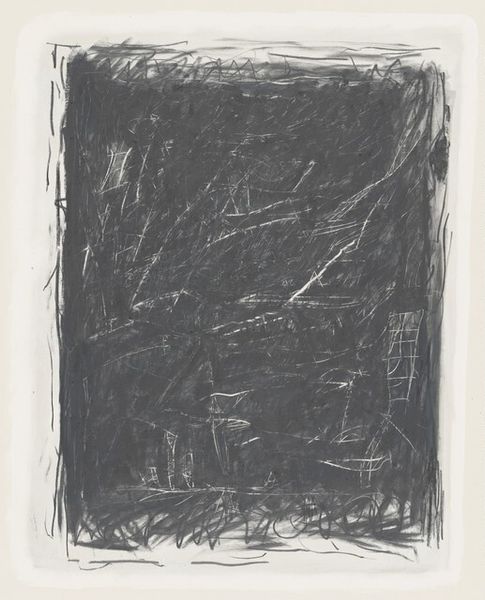
#
amateur sketch
# print
#
pen sketch
#
pencil sketch
#
incomplete sketchy
#
personal sketchbook
#
ink drawing experimentation
#
pen-ink sketch
#
pen work
#
sketchbook drawing
#
sketchbook art
Dimensions: plate: 57.47 × 70.49 cm (22 5/8 × 27 3/4 in.) sheet: 90.17 × 78.11 cm (35 1/2 × 30 3/4 in.)
Copyright: National Gallery of Art: CC0 1.0
Editor: Here we have "May 26th," a print by Roland Ginzel from 1956. It strikes me as a pretty chaotic composition, all these sharp lines and fragmented shapes. What do you see in this piece? Curator: Chaos, definitely, but perhaps a very specific kind. Look at the date – 1956. What was happening then, culturally and politically? The Cold War was escalating; anxieties about nuclear proliferation were widespread. Do you think this explosion of fractured forms might be reflecting some of those anxieties? Editor: That's an interesting thought! It's easy to get lost in the abstraction and forget the historical context. So, you see a connection between the artwork's fragmented composition and Cold War anxieties? Curator: Precisely! Abstraction became a powerful language for expressing the unspeakable – the trauma of war, the fear of annihilation. Also, think about Ginzel as an artist working within a specific social context, possibly feeling silenced or unheard. The non-representational allows for critical commentary without direct confrontation. Who benefits and who is silenced by the narratives we build? Editor: That makes a lot of sense. I hadn’t considered how the abstract style itself could be a form of resistance. It opens up so many more questions than it answers! Curator: Indeed. And that's the power of art. It challenges us to consider the socio-political forces shaping our perceptions. Now, looking at this work, do you feel empowered to critically analyse structures around you? Editor: Definitely. I'll never look at an abstract piece the same way again. Considering it in the context of its time makes it so much richer and relevant. Curator: Exactly! Let's strive to be actively engaged with the stories and lived experiences represented by the art surrounding us.
Comments
No comments
Be the first to comment and join the conversation on the ultimate creative platform.

